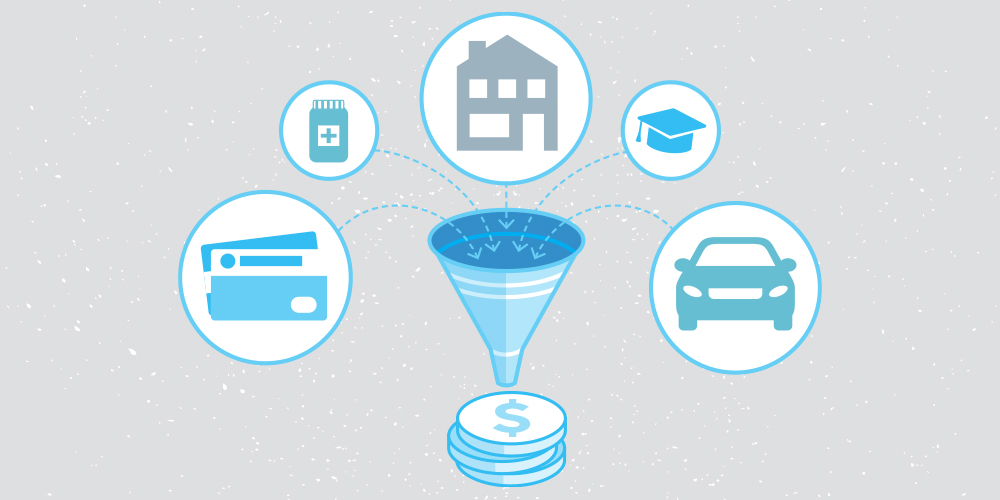Consolidating your debt means combining all your existing debt payments (credit cards, lines of credit, etc.) into one single payment, typically at a significantly lower interest rate. It can be a helpful way to tackle your debt for many reasons, including:
- Making payments easier to manage. It organizes multiple bills with varying interest rates and due dates into one simple recurring payment at one rate.
- Helping to eliminate your debt sooner. A lower interest rate allows you to shorten the length of the loan (known as the amortization) because your payments will go farther each month.
- Reducing your monthly debt repayment. A lower interest rate decreases the amount you need to pay each month.
- Saving you money overall. In the long-term you’ll end up paying back less money than you would have at a higher rate because you’ll be paying less toward interest.
At the end of the day, debt consolidation is really taking out new credit and using it to pay off what you owe elsewhere.
Your reasons for considering debt consolidation might be any combination of these factors – maybe even all of them. But even though it seems appealing, consolidating your debt might not be the best financial solution for you.
Is debt consolidation right for you?
If your monthly cash flow is enough to cover your repayments – then consolidation likely makes sense. If your debt has become unmanageable, it’s best to seek advice from a professional to help you with a debt strategy. And if you’re unsure where you fall, use our personal debt consolidator tool to find out.
The two factors that best determine if debt consolidation is right for your situation are: your credit score and your assets (what you own – your house, car, etc.). Your goal is to secure a new loan or credit account. To do so your credit score must be in good standing. Lenders will also look for collateral (your assets) as a guarantee on the money you’re asking for.
So, if your debt load is manageable, your credit score is good and you have enough collateral, debt consolidation can help you on a path toward being debt-free.
How to consolidate your debt
Once you’re sure it’s right for you, there are two main ways to go about consolidating your debt:
1. Take advantage of a low-interest, balance account transfer credit card offer
If most of your debt is on high interest credit cards you might want to consider talking to your financial institution to see if you qualify for a balance account transfer. This lets you transfer your existing credit card balances (yes, you can combine balances from multiple cards) onto one credit card account at a promotional interest rate, for a one-time fee.
The key is to take note of how long the promotional rate lasts (could range from six months to a year) and calculate how much you need to pay monthly to erase the debt before the end of the promotional period.
2. Get a consolidation loan or line of credit
If your debt is more than just credit cards (auto loans, hospital bills, etc.), then a low, fixed-rate consolidation loan is a great option. They come in a range of terms, offering the flexibility for you to choose the right length that allows you to balance your monthly payments with your monthly budget.
A line of credit will offer a similar low interest rate but works as revolving credit (you can pay it down and borrow against it again later), rather than having a set term.
Achieve your debt-free goal
If you go the route of consolidation to eliminate your debt – whether it’s a loan or a balance account transfer – don’t forget to have a plan in place to stay debt-free once you get there. Being debt-free is a common financial goal and Servus experts can offer advice and strategies to help you achieve it.


